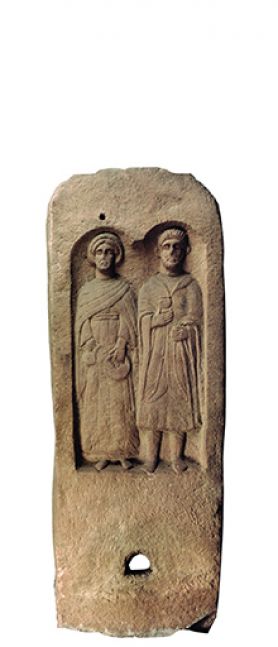Peasant Couple commemorative stone

This stone carving, one of the most endearing in the Museum's collections, was discovered in the village of Oberhaslach and depicts a peasant couple. The quality of the sculpture and the numerous details of the costumes make it a remarkable folk art document. Dressed in traditional Gallo-Roman costume, the couple is depicted standing under a double arch. In their hands the two figures hold the essential elements for the great journey into the afterlife and the banquet of immortality. A cavity dug at the base of the stone was used for placing funerary offerings. There is another opening above the arch in which the female figure stands. The sculpture was probably made after the death of the man and, while his wife still survived him, there may have been a veil covering her figure.
This stone provides a valuable record of Gallo-Roman costume. The cloth headdress worn by the woman reveals her hairstyle parted down the middle. Around her shoulders is a large shawl, its corners hanging down at her sides and decorated with pom-poms. She holds in her hands a potbellied flask and a round basket full of fruit. To her left, her husband's face is framed by a beard collar and his hair is arranged in parallel locks thrown back. He wears a tunic with a wide collar. His shoulders are covered by a cucullus, a heavy woollen coat with a hood. This Gallic mantle was quickly adopted by the Romans and exported throughout the Empire. In his hands the man is holding a goblet with a rounded "belly" and a piece of cloth.
